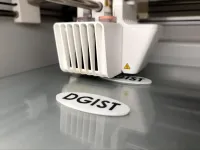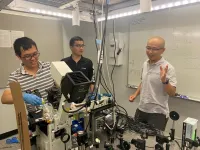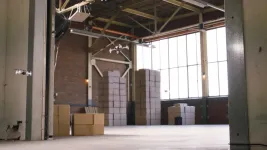Community health workers identify health-related social needs in patients
Implementation of health-related social needs screening at Michigan health centers: A qualitative study
2021-07-14
(Press-News.org) Community Health Workers Can Play a Role in Identifying Health-Related Social Needs in Patients
Addressing patients' health-related social needs, like housing and food security, is integral to patient care. Federally Qualified Health Centers are leaders in screening for and addressing patients' health-related social needs. However, screening practices vary. This variation is relatively unexplored, particularly with regards to organizational and state policy influences. Study authors conducted in-person, qualitative interviews at Michigan FQHCs to examine how screening approaches vary in the context of statewide social needs screening initiatives and structural factors. They identified four themes: 1) Statewide initiatives and local leadership drove variation in screening practices. 2) Community health workers played an integral role in identifying patients' needs and their roles often shifted from "screener" to "implementer." 3) Social needs screening data was variably integrated into electronic health records and infrequently used for population health management and 4) Sites experienced barriers to social needs screening that limited their perceived impact and sustainability. FQHCs placed value on the role of community health workers, on sustainable initiatives and on funding to support continued social needs screening in primary care settings, according to the study. Determining the optimal approaches to screening is important to advancing community health.
INFORMATION:
Implementation of Health-Related Social Needs Screening at Michigan Health Centers: A Qualitative Study
Margaret Greenwood-Ericksen, MD, MSc, et al
Department of Emergency Medicine, University of New Mexico, Albuquerque, New Mexico
https://www.annfammed.org/content/19/4/310
ELSE PRESS RELEASES FROM THIS DATE:
2021-07-14
While several biology techniques have undergone significant technical advances that have allowed their high-throughput implementation, assessing the resistance levels of plant varieties to microbial pathogens remains an arduous and time-consuming task. In response to this, Pujara and collaborators took advantage of the naturally occurring luminescence of a deep-sea shrimp to engineer a light-producing bacterial reporter that allows the quantification of plant resistance levels through imaging.
The Nanoluc luciferase (NL) from Oplophorus gracilirostris is a small protein characterized by its high stability and strong brightness. The researchers exploited these features to produce a light emitting bacterial strain from the Pseudomonas syringae species, ...
2021-07-14
The Earth contains about one trillion species of microbes -- only about one-tenth of which have been identified. A single human can house 100 trillion microbes, creating a single microbiome that serves an ecosystem of microbes.
Microbes connect and transform in myriad ways, creating and combining and separating microbiomes anew. How can we begin to parse out how microbiomes differ, how they are similar, how they evolved and how they may change in the future?
An international team of researchers may have the answer. They published a scale-free, fully connected search-based network to explore the connectedness ...
2021-07-14
Kumara Raja Sundar, MD, a family physician at Kaiser Permanente of Washington, uses two media synchronicity theory principles - conveyance and convergence - as a framework for choosing the right medium of care for his patients. In this essay, Sundar discusses how operating within this framework changed his own practice and decision making during the COVID-19 pandemic, particularly with the use of telemedicine versus in-person clinic visits. The theory of conveyance focuses on transmitting and processing diverse information to understand a situation. It requires time to analyze data, create patterns and make conclusions. Convergence focuses on discussing pre-processed information to achieve a mutual understanding of it. ...
2021-07-14
HOUSTON - A phase II study led by researchers from The University of Texas MD Anderson Cancer Center found that treatment with atezolizumab and bevacizumab was well-tolerated and resulted in a 40% objective response rate in patients with advanced malignant peritoneal mesothelioma, a rare cancer in the lining of the abdomen. Responses occurred in patients regardless of PD-L1 expression status and tumor mutation burden.
Trial results indicated that the combination was safe and effective in patients with disease progression or intolerance to previous chemotherapy ...
2021-07-14
A consortium of modern slavery experts, led by the University of Nottingham, have assisted the Greek government to tackle a humanitarian crisis unfolding in the strawberry fields of southern Greece.
Using satellite technology to identify migrant settlements - a technique pioneered by the university's Rights Lab - and working with the Greek authorities, the experts then developed a decision model for which they could prioritise victims that were at highest risk.
Leading the study, the Rights Lab combined different data sources and methods to build a set of criteria measuring the extent of labour exploitation in a settlement. The academics then validated these criteria with a government agency and a Non-Governmental ...
2021-07-14
The sun provides a daunting source of electromagnetic disarray - chaotic, random energy emitted by the massive ball of gas arrives to Earth in a wide spectrum of radio frequencies. But in that randomness, Stanford researchers have discovered the makings of a powerful tool for monitoring ice and polar changes on Earth and across the solar system.
In a new study, a team of glaciologists and electrical engineers show how radio signals naturally emitted by the sun can be turned into a passive radar system for measuring the depth of ice sheets and successfully tested it on a glacier in Greenland. The technique, ...
2021-07-14
The treatment of many medical issues like abnormal gait and muscular disorders require an accurate sensing of applied pressure. In this regard, flexible pressure sensors that are simple, lightweight, and low-cost, have garnered considerable attention. These sensors are designed and manufactured through "additive manufacturing," or what is more commonly called "3D printing," using conductive polymer composites as their building blocks.
However, all 3D-printed pressure sensors developed so far are limited to sensing applied forces along a single direction only. This is hardly enough for real ...
2021-07-14
CHAMPAIGN, Ill. -- Sharing ideas in an online learning environment has a distinct advantage over sharing personal details in driving learner engagement in massive open online courses, more commonly known as MOOCs, says new research co-written by a University of Illinois Urbana-Champaign expert who studies the intersection of marketing and digital environments.
Online learning engagement can be increased by nearly one-third by simply prompting students to share course ideas in a discussion forum rather than having them share information about their identity or personal motivations for enrolling, said Unnati Narang, a professor of business administration at the Gies College ...
2021-07-14
RESEARCH TRIANGLE PARK, N.C. -- Army-funded research identified a new chemistry approach that could remove micropollutants from the environment.
Micropollutants are biological or chemical contaminants that make their way into ground and surface waters in trace quantities.
Using a pioneering imaging technique, Cornell University researchers obtained a high-resolution snapshot of how ligands, molecules that bind to other molecules or metals, interact with the surface of nanoparticles. In doing so, they made an unexpected breakthrough discovery. They determined that by varying the concentration of an individual ligand they could control the shape of the particle it attached too.
This approach could ...
2021-07-14
When there is a gas leak in a large building or at an industrial site, human firefighters currently need to go in with gas sensing instruments. Finding the gas leak may take considerable time, while they are risking their lives. Researchers from TU Delft (the Netherlands), University of Barcelona, and Harvard University have now developed the first swarm of tiny - and hence very safe - drones that can autonomously detect and localize gas sources in cluttered indoor environments.
The main challenge the researchers needed to solve was to design the Artificial Intelligence for this complex task that would fit in the tight computational and memory constraints of the tiny drones. They solved this challenge by means of bio-inspired navigation and search strategies. The scientific ...
LAST 30 PRESS RELEASES:
[Press-News.org] Community health workers identify health-related social needs in patients
Implementation of health-related social needs screening at Michigan health centers: A qualitative study







